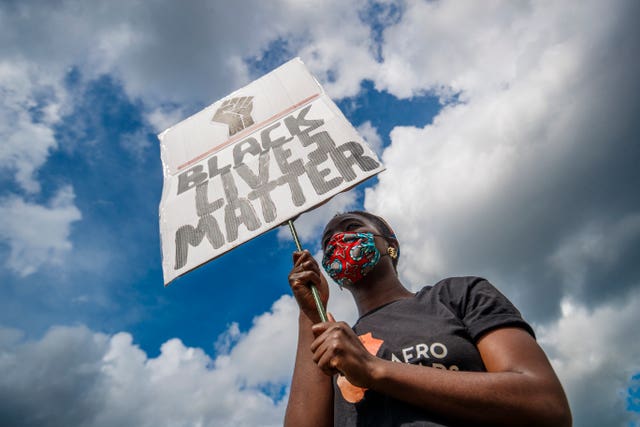
It’s 50 years since The Revolution Will Not Be Televised first urged the world to think differently, but Gil Scott-Heron’s daughter believes the famous protest song is now more relevant than ever.
Che Heron, a 22-year-old student who lives in south-east London, believes the track references “the idea that a revolution will take place in your mind, and you’ll suddenly realise that you’re on the wrong page and need to be on a different page”.
“Realistically what’s happening now with regards to the Black Lives Matter movement seems to be exactly that. It’s like the new consciousness that’s gracing the earth,” she told the PA news agency.
“I feel like he would think that we are in an awakening, a new global consciousness and that everybody’s minds are revolutionising in the way that he referenced in that particular song.”
The lyrics have inspired demonstrations all over the globe since it was released, first as a spoken word piece and then a year later in 1971’s hit record Pieces Of A Man.
Among many memorable lines is the prediction that “black people will be in the street looking for a brighter day”.
Che believes that, were he alive in 2020, her father would be found on the street with Black Lives Matter demonstrators. Many of them would no doubt be holding placards with the title of his most famous song.

“He was ahead of his time in every single way and those words will never not be relevant,” she said.
Countless artists have also sampled or referenced Scott-Heron’s work over the decades, including more recently Kanye West – who performed at his funeral in 2011 – and Kendrick Lamar.
Many more have been influenced by his fusion of jazz, soul and beat poetry, though his daughter admits he “wasn’t even the biggest fan of rap”.
The youngest of four siblings, Che was 13 when her famous father died.
“Our relationship was funny in particular because we are pretty similar,” she said.
“We’re both pretty sarcastic and dry. He passed away when I was young, but even before that our relationship was pretty strong and based on the fact that we had similar personalities.”

Che moved between the UK and US during childhood before settling in London, and while she believes the countries have their differences, she feels that there are many similarities in the black experience either side of the Atlantic.
“Even living here you can see how the police treat black people differently,” she said.
“The roughness, the man-handling. I have numerous friends who have had their wrists broken by police.
“I’ve had the police called on my friend who’s a black guy for standing outside my house in my whiter neighbourhood.”
“The police and people here, there’s a long hostile relationship.”
Che, who hopes to work in documentary film after graduating, is currently working on a dissertation at Goldsmiths, University of London on what she describes as the “spectacle of black suffering”.

She began working on the subject months before images of George Floyd’s death travelled around the world and says she has been left “exhausted” by constantly examining images of black people facing harm.
“I wanted to look at the way images of black people being traumatised or suffering have become so normal.
“We turn on our phones, we see another black person get shot, we see another black person die at the hands of police.
“I don’t believe that non-black people need to see that level of violence to understand that it’s happening. They also need to understand the psychological effects on black people, seeing people who look like them constantly brutalised.”


Comments: Our rules
We want our comments to be a lively and valuable part of our community - a place where readers can debate and engage with the most important local issues. The ability to comment on our stories is a privilege, not a right, however, and that privilege may be withdrawn if it is abused or misused.
Please report any comments that break our rules.
Read the rules here